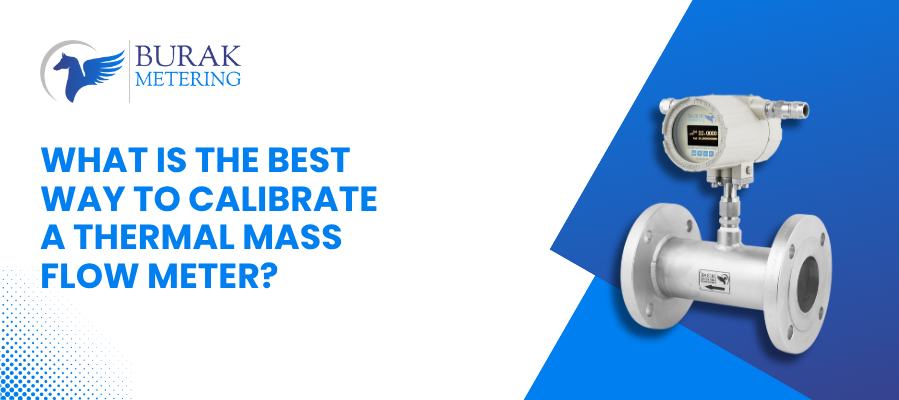 Phone
Phone

Thermal mass flow meters are crucial tools for measuring the flow rates of gases.
These meters work by determining the power needed to keep a heated sensor at a temperature above a reference point, with the temperature difference directly related to the mass flow rate of the gas.
The calibration process establishes the correlation between power input and mass flow rate, ensuring the flow meter's accuracy.
However, since each sensor has unique heat transfer characteristics, every thermal mass flow meter must be calibrated individually.
The first step in calibrating a thermal mass flow meter involves adjusting the two platinum RTDs (resistance temperature detectors) inside the sensor.
These RTDs are then tested across various temperatures within the flow meter’s operating range to confirm that their calibration is accurate.
Given that the flow meter works based on temperature and heat transfer theory, it is essential to perform temperature compensation. This step ensures that the flow meter operates independently of variations in gas temperature, delivering consistent results.
The calibration procedure begins by placing the thermal mass flow meter’s sensor into a test section. A known volume of gas is then pumped through the pipe, and the flow meter’s signal is measured to assess the overheat level. This calibration process must be repeated a minimum of 12 times across the meter’s entire operating range to ensure accurate readings.
In high-precision applications, turbine flow meters with pressure and temperature corrections are used to measure actual flow rates, with an uncertainty of 0.5%. For lower flow rates, a Bell Prover calibration procedure is employed, offering similar uncertainty of 0.5% of the reading.
Effective mass flow meter calibration is essential for reliable operation, and it requires careful attention to the following key areas:
Thermal mass flow meters are widely used for various gas flow measurement applications, including air, nitrogen, and oxygen. For example, if you're wondering which thermal mass flow meter is best for measuring nitrogen or air, it’s important to select a meter with a calibration procedure tailored to the specific gas you're working with.
Oxygen flow meter calibration is another specialized process that ensures accurate readings when measuring oxygen flow rates, which can have different properties compared to other gases.
At Burak, we prioritize offering calibration methods that closely replicate the real-world conditions our customers face.
Whenever possible, we use a mixture of gases or the actual gas to perform the thermal mass flow calibration.
However, if using the actual gas poses safety or hazardous risks, we calibrate using a surrogate gas. In such cases, the calibration is based on a model that reflects the thermal properties of the surrogate gas.
The calibration of thermal mass flow meters is a vital step in ensuring accurate and reliable flow measurement for a wide range of applications. Whether you’re working with air, nitrogen, oxygen, or other gases, understanding how to calibrate a flow meter correctly is essential for optimizing performance.
By following proper thermal mass flow meter calibration procedures, you can improve measurement accuracy and ensure your flow meter delivers consistent results throughout its lifespan.
For more information on how to calibrate a thermal mass flow meter, calibrate flow meters, or inquire about mass flow controller calibration, reach out to a Burak Metering, a trusted provider specializing in thermal mass flow meter calibration.